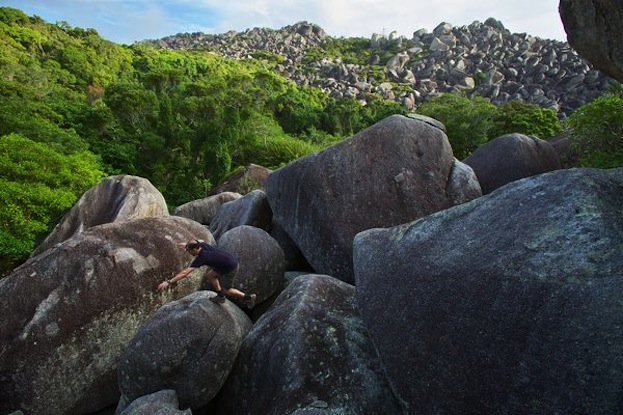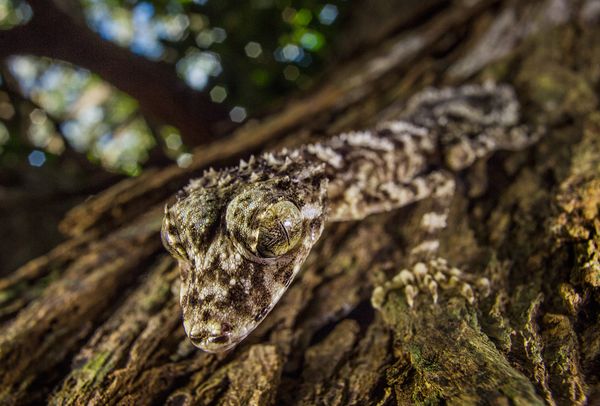
3 New Species Discovered in Australia's 'Lost World'

During an expedition last March to a remote part of northeastern Australia, where few humans have tread, scientists discovered three unique species of vertebrates: an impressively camouflaged leaf-tail gecko, a golden-colored skink and a rock-loving frog.
The researchers were exploring the rain forests on top of the Cape Melville Range, a 9-mile-long (15 kilometers) mountain range located on Australia's Cape York Peninsula, which juts out just south of Papua New Guinea. Surrounded by nearly impassable chunks of granite, the misty region has been cut off for millions of years and dubbed a "lost world," according to National Geographic, which funded the expedition.
"Finding three new, obviously distinct vertebrates would be surprising enough in somewhere poorly explored like New Guinea, let alone in Australia, a country we think we've explored pretty well," biologist Conrad Hoskin of James Cook University in Queensland said in a statement. [See Images of the Lost World Species]
The species have developed some unusual features to adapt to their isolated environment.
"You might wonder how a frog's tadpoles can live in a 'hollow' boulder-field with no water sitting around," Hoskin said. "The answer is that the eggs are laid in moist rock cracks and the tadpoles develop within the eggs, guarded by the male, until fully-formed froglets hatch out.
Hoskin explained that this frog, which was named Cophixalus petrophilus, spends most of its life in the dark, cool and moist environment deep inside the boulder-fields, only emerging on the surface when it rains.

The relatively large leaf-tailed gecko (Saltuarius eximius), measuring 8 inches (20 centimeters) in length, has heavily camouflaged skin that allows it to hide on rocks and trees and ambush passing prey like insects and spiders. The creature's eyes are also very large so that it can see inside the cracks of dimly lit boulder-piles as it hunts, and its long legs seem well adapted for climbing around on rocks, the researchers said.
Sign up for the Live Science daily newsletter now
Get the world’s most fascinating discoveries delivered straight to your inbox.
The new species of skink — dubbed Saproscincus saltus — has unusually long limbs, as well, which it uses for running and jumping across its rocky environment.
The discoveries mean that there are now six known species of vertebrates known to be unique to the Cape Melville Range (three frogs, two skinks and one gecko), the researchers say.
Hoskin said the discovery of the gecko was the highlight of the expedition.
"The Cape Melville leaf-tailed gecko is the strangest new species to come across my desk in 26 years working as a professional herpetologist," he said in a statement. "I doubt that another new reptile of this size and distinctiveness will be found in a hurry, if ever again, in Australia."
The finds were described this month in the journal Zootaxa.
Follow Megan Gannon on Twitter and Google+. Follow us @livescience, Facebook & Google+. Original article on Live Science's OurAmazingPlanet.










